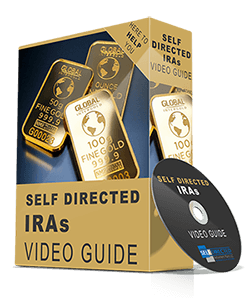Table of Content:
Last updated on July 27th, 2021
Written by: Rick Pendykoski
What are the different types of IRAs?
There are 11 types of IRAs as follows traditional IRA, Roth IRA, SEP IRA, Simple IRA, HSA, ESA, Self Directed IRA, Non-deductible IRA, Sposural IRA, Inherited retirement account and rollover IRA as of 2021, but we have classified these IRAs into three groups of plans for your better understanding and selection as per your requirement.
INDIVIDUAL PLANS
- Traditional IRA
A traditional IRA is a tax-advantaged retirement savings account that allows individuals to save tax-deferred money for retirement. Contributions are tax deductible, and the funds grow tax-deferred under the protection of the account until withdrawals are made.Who it’s best for: People in the higher tax bracket and workers who are not eligible or do not have access to an employer-sponsored retirement plan.
Key Advantages:
Any “earned” income can be used to contribute to a traditional IRA.
You can use traditional IRA money to pay for qualified college expenses without paying an early distribution penalty, although you’ll pay taxes on the distribution.
You can use up to $10,000 from a traditional IRA toward the purchase of your first home (again, you’ll owe taxes on the distribution but no penalty).
Who can contribute:
Traditional IRA: Cares Act now allows anyone with earned income to contribute, the age limit has been removed.
Roth IRA: No age restrictions, but there are income eligibility criteria as per MAGI.
Tax treatment: If the employer hasn’t covered the employee with a retirement plan, the employee can deduct the full amount of the contribution on the tax return.
- Roth IRA
A Roth IRA is an individual retirement account wherein the contributions made are with after-tax dollars. All earnings, including capital gains, interest, and dividend income, grow tax-deferred until the Roth age rules kick in then tax deferred changes to tax free!Who it’s best for: Individuals who expect to be in a higher tax bracket in retirement and low and middle-income workers, who might need to access some of the money before they reach their retirement age.
Key Advantages:
Qualified withdrawals in retirement are tax-free.
Contributions can be withdrawn at any time.
Roth IRAs also let you leave your money untouched for as long as you like.
You can keep contributing to a Roth IRA regardless of your age.
Who can contribute:
Anyone: No age restrictions, but there are income eligibility criteria as per MAGI.
Tax treatment: Contributions are made with after-tax dollars, and withdrawals in retirement are tax-free.
SMALL BUSINESS PLANS
- SEP IRA
A Simplified Employee Pension Individual Retirement Arrangement (SEP IRA) is a tax-deferred retirement plan adopted by business owners to provide retirement benefits for their employees and for themselves.Who it’s best for: Small business owners who want to offer retirement plans to their employees and supersize their retirement stash while getting a tax deduction on any contributions made for employees.
Key Advantages:
Easy to set up and maintain.
Annual funding requirements are flexible.
Offer a vast range of investment choices.
SEP IRAs also have higher annual contribution limits than standard IRAs.
Start-up and operating costs are generally lower than setting up a 401(k) plan.
Eligibility requirements are low for employees.
Who can contribute
Solely by employer contributions
Tax treatment: The contributions made to this account are tax-deductible.
- Simple IRA
A savings incentive match plan for employees (SIMPLE) IRA is a tax-deferred retirement plan for small-business owners with employees less than 100. In a SIMPLE IRA, the employer is required to make contributions either on their own or to match the employee’s contributions.Who it’s best for: Small-business owners who want to make tax-deferred contributions to an employee’s plan.
Key Advantages:
Easy to set up and maintain.
Salary deferral plan with minimal administration.
Customized contribution allocation for each participant with electronic funding.
Offers a wide range of investment choices.
Who can contribute:
Employee deferrals and employer contributions.
Tax treatment: Contributions are tax-deductible and required every year.
OTHER PLANS
- Health Savings Account (HSA) Created in 2003
A Health Savings Account (HSA) is a tax-advantaged savings plan that combines with a high deductible health plan (HDHP) to help people save money on healthcare costs. The contributions are accumulated over time until the money is needed on a tax-free basis to pay for qualified medical expenses.Who it’s best for: People who are covered by a high deductible health plan and not enrolled in Medicare and not claimed as a dependent on someone else’s tax return.
Key Advantages:
A Health Savings Account (HSA) can help patients with high-deductible health insurance plans cover their out-of-pocket costs.
Unspent money in an HSA rolls over at the end of the year so it’s available for future health expenses.
Eligible expenses include a wide range of medical, dental and mental health services.
The money in your HSA remains available for future qualified medical expenses even if you change health insurance plans, go to work for a different employer, or retire.
Most HSAs issue a debit card, so you can pay for prescription medications and other eligible expenses right away.
Who can contribute:
Contributions can come from you, your employer, a relative or anyone else who wants to add to your HSA.
Tax Treatment: The deductions to fund an HSA are tax deductible.
- ESA (Education Savings Account)/Education IRA (EIRA)
More commonly known as the Coverdell Education Savings Account (ESA), this education IRA is a tax-advantaged account that is used to pay a beneficiary or child’s qualified education expenses on a tax-free basis.Who it’s best for: People who like making specific investments, or may need the money to pay for the education expenses before the beneficiary or the child gets to college.
Key Advantages:
It has a broad definition for “qualified expenses”. Along with tuition, room, and board, it covers items like books, computers, and internet access.
The funds can be used starting when the child is in Kindergarten.
Who can contribute:
Parents, Grandparents
Tax treatment: Contributions made are not tax-deductible; however, the earnings grow tax-free.
- Self-Directed IRA
A self-directed IRA is a variation of traditional or Roth IRA that allows people to save for retirement on a tax-advantaged basis. This type of IRA allows the account holder to invest or own a variety of assets, including real estate that is generally prohibited from regular IRAs.Who it’s best for: Savvy investors who want to explore the non-traditional businesses and alternative investment options such as real estate.
Key Advantages:
SDIRAs allow the owner to invest in a much broader array of assets, that regular IRAs are generally not allowed – governed by their respective custodians.
You have direct access to your IRA funds.
There is no need to obtain approvals or send money to an IRA custodian for any investment.
You can save a lot of money on custodian fees.
Who can contribute:
Account Owner.
Tax treatment: It depends on the type of self-directed IRA to which contributions are made. In Self-Directed Roth IRA, contributions are not tax-deductible, and in traditional Self-Directed IRAs contributions may be tax-deductible.
- Non-deductible IRA
A non-deductible IRA is a retirement plan that doesn’t allow individuals to deduct their contributions from their income taxes as a traditional IRA would allow. However, the non-deductible contributions grow tax-free.Who it’s best for: Those who are not eligible to fund a Roth IRA or a deductible IRA.
Key Advantages:
They come in handy when you want to sock away more for retirement than the current limits allow.
Who can contribute:
Account Owner.
Tax treatment: Contributions are made with after-tax dollars.
- Spousal IRA
A spousal IRA is a strategy that allows a working spouse to make contributions to an IRA that’s in the name of a non-working spouse. This is an exception to the rule that the account holder has to have earned income to contribute to an IRA.Who it’s best for: Non-working or low-income earning spouses.
Key Advantages:
Spousal IRAs allow couples to accelerate their retirement savings.
Who can contribute:
Working spouse to contribute to an individual retirement account (IRA) that is in the name of a non-working spouse.
The spouse gets access to the same wide variety of investment choices.
Tax treatment: Contributions are tax-deductible.
- Inherited Retirement Accounts
An inherited IRA is also referred to as a beneficiary IRA. This type of account is opened when a person inherits an employer-sponsored retirement plan or an IRA upon the death of the original owner. A beneficiary, spouse, relative, or an unrelated party or entity can inherit the IRA. However, the tax laws around inherited IRAs have always been complicated, but since the Secure Act has come into effect, these laws have become even more complicated.Who it’s best for: Because this is an inherited account – almost anyone allowed to be a beneficiary.
Who can contribute:
Additional contributions may not be made to an inherited IRA.
Can be changed to a self directedira with checkbook control.
Spousal inherited IRA’s can be rolled into a self directed 401 k.
Tax treatment:
If Roth Spousal IRA: you don’t get a tax break when you contribute to a Roth IRA. But your contributions and earnings grow tax-free, and qualified distributions are tax-free, as well.
If Traditional Spousal IRA: you get an upfront tax break, but pay taxes on your contributions and earnings as you withdraw them during retirement.
- Rollover IRA
A Rollover IRA account allows people to transfer their funds from their old employer-sponsored retirement plan into an IRA. An IRA rollover maintains the tax-deferred status of the retirement assets. The account holder needn’t pay the current taxes or the penalty for withdrawing early from the retirement account to transfer into an IRA.Who it’s best for: Employees, who have 401(k) retirement plans from their past employers.
Key Advantages:
Keeps your retirement dollars safe from taxes when the process is done correctly.
Who can contribute:
Account owner
Tax treatment: After the rollover, all future contributions are tax-deferred.



